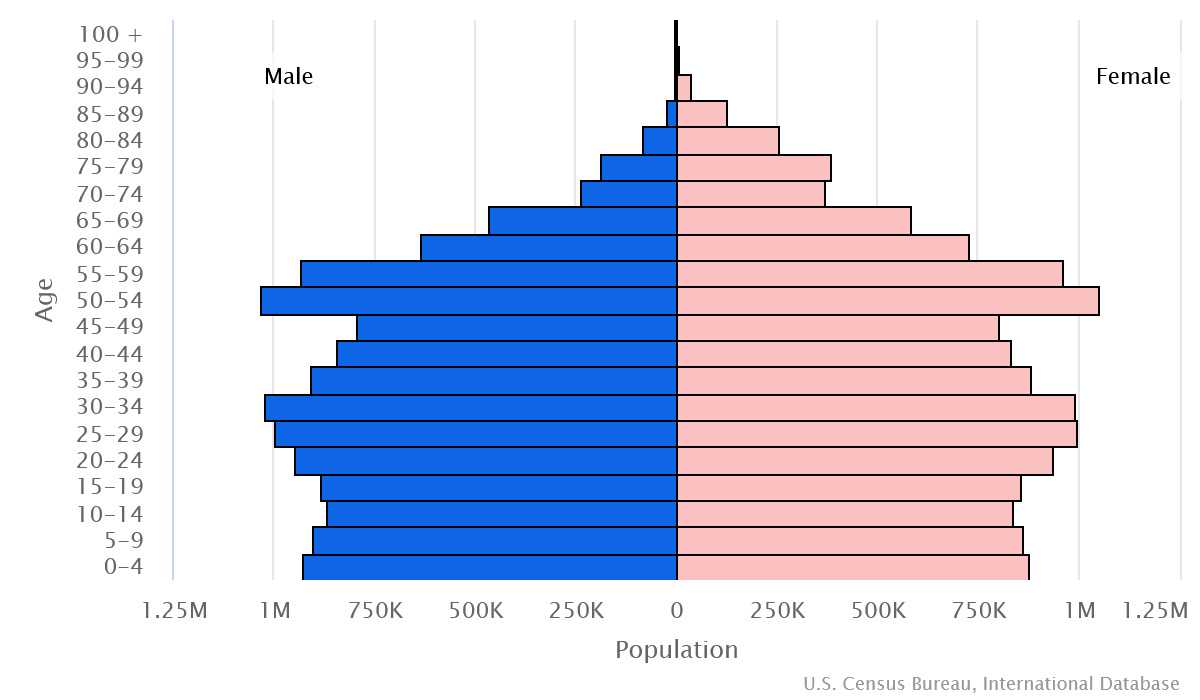Introduction
Background
An independent kingdom for much of its history, Korea was split after World War II, with the northern half coming under Soviet-sponsored communist control. Under autocratic leader KIM Il Sung, North Korea adopted a policy of diplomatic and economic "self-reliance" as a check against outside influence. KIM Jong Il was officially designated as his father's successor in 1980, followed in 2011 by current leader KIM Jong Un.
Geography
Area
total: 120,538 sq km
land: 120,408 sq km
water: 130 sq km
Climate
temperate, with rainfall concentrated in summer; long, bitter winters
Natural resources
coal, iron ore, limestone, magnesite, graphite, copper, zinc, lead, precious metals, hydropower
People and Society
Population
total: 26,298,666
male: 12,828,269
female: 13,470,397 (2024 est.)
Ethnic groups
racially homogeneous; there is a small Chinese community and a few ethnic Japanese
Languages
Korean
Religions
traditionally Buddhist and Confucian, some Christian and syncretic Chondogyo (Religion of the Heavenly Way)
Population growth rate
0.4% (2024 est.)
Government
Government type
dictatorship, single-party state; official state ideology of "Juche" or "national self-reliance"
Capital
name: Pyongyang
Executive branch
chief of state: State Affairs Commission President KIM Jong Un (since 17 December 2011)
head of government: Supreme People's Assembly President CHOE Ryong Hae (since 11 April 2019)
Legislative branch
description: unicameral Supreme People's Assembly or Ch'oego Inmin Hoeui (687 seats; members directly elected by majority vote in 2 rounds if needed to serve 5-year terms); note - functions as a rubberstamp legislature; the Korean Workers' Party selects all candidates
Economy
Economic overview
one of the last centrally planned economies; hard hit by COVID-19, crop failures, international sanctions, and isolationist policies; declining growth and trade, and heavily reliant on China; poor exchange rate stability; economic data integrity issues
Real GDP (purchasing power parity)
$40 billion (2015 est.)
$40 billion (2014 est.)
$40 billion (2013 est.)
Real GDP per capita
$1,700 (2015 est.)
$1,800 (2014 est.)
$1,800 (2013 est.)
Agricultural products
maize, rice, vegetables, apples, cabbages, fruits, sweet potatoes, potatoes, beans, soybeans (2022)
Industries
military products; machine building, electric power, chemicals; mining (coal, iron ore, limestone, magnesite, graphite, copper, zinc, lead, and precious metals), metallurgy; textiles, food processing; tourism
Exports
$222 million (2018)
$4.582 billion (2017 est.)
$2.908 billion (2015 est.)
Exports - partners
China 53%, Senegal 11%, Nigeria 6%, Poland 4%, Netherlands 3% (2022)
Exports - commodities
tungsten ore, refined petroleum, iron alloys, electricity, molybdenum ore (2022)
Imports
$2.32 billion (2018 est.)
$3.86 billion (2016 est.)
Imports - partners
China 98%, Zimbabwe 0%, Netherlands 0%, India 0%, Colombia 0% (2022)
Imports - commodities
plastic products, tobacco, soybean oil, rubber tires, packaged medicine (2022)
Exchange rates
North Korean won (KPW) per US dollar (average market rate)
Exchange rates:
135 (2017 est.)
130 (2016 est.)
130 (2015 est.)
98.5 (2013 est.)
155.5 (2012 est.)
Page last updated: Wednesday, June 26, 2024




